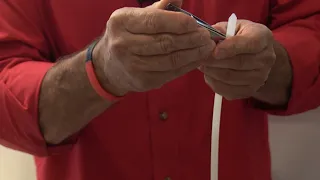It’s rare that a single plumbing issue can cause immediate chaos throughout an entire home—unless it’s a major water leak, raw sewage backing up through a drain, or a gas leak. Knowing how to respond swiftly can mean the difference between a minor fix and a costly catastrophe. Below are key takeaways from what I believe to be one of the most essential plumbing tutorials: how to turn off your home’s water supply, keep sewage from flooding indoors, and shut off natural gas in an emergency. By understanding these steps and showing them to everyone in your household, you’re setting yourself up for a quick response to any major plumbing or gas crisis.
Turning Off Water at the Meter or Valve Box
Use the Right Tool
Locate a “meter key” or a dedicated wrench designed for your water meter. Keep it in a spot where everyone in the home can find it. If your meter is in a municipal box, confirm whether you’re allowed to open it (some localities have specific rules).
Shut Off at the Meter
Open the meter box, find the valve (often a straight line indicating “on”), and rotate it 90 degrees so the lock holes line up. This indicates “off.” Once the leak or emergency is resolved, turn it back to the original position to restore water.
Consider a Dedicated Valve Box
Some homes have (or can install) a valve box between the meter and the home. This box often contains a simple on/off ball valve or a three-valve bypass system. Shutting off water here is typically easier and doesn’t require a meter key.
Preventing Sewage Backups Indoors
Locate Your Two-Way Cleanouts
A two-way cleanout (or simply a cleanout in some regions) is typically found in your yard. If sewage backs up, releasing the cap can provide an escape route for waste water, avoiding indoor overflow. Check that the cap is loose enough to pop off if pressured from a clog.
Keep an Eye on Drains
If you notice water backing up in your tub or shower—especially at the home’s lowest level—it’s a strong sign of a main line blockage. Removing or loosening the cleanout cap lets sewage flow outside rather than flooding your bathroom.
Turning Off Natural Gas
Safety First
If you detect a gas odor or suspect a gas leak, you can switch off your gas at the meter’s main valve. The valve is typically parallel to the pipe when open. Turning it 90 degrees will close it. However, avoid creating sparks or flames, and consider calling a professional for a detailed inspection.
Prevent Lockouts
When you contact certain gas utilities, they may lock the valve if they confirm a leak. You’ll then need a permit and a plumber’s pressure test before reactivation. If you’re qualified or have your plumber on standby, you can shut it off yourself, then have a professional address the leak promptly.
Why Everyone in Your Home Should Know These Steps
• Quick Response: A burst pipe can flood a room within minutes. The sooner the water is off, the lower your repair bills.
• Shared Responsibility: Anyone at home—spouse, teenager, roommate—might face the emergency first. They should know how to act, even if you’re out.
• Confidence in a Crisis: Handling emergencies calmly reduces panic. When you rehearse these procedures, it’s easier to stay composed.
Final Check
- Find or purchase a meter key (or appropriate wrench).
- Mark your cleanouts to identify them easily in an emergency.
- Show everyone in the household how to turn the water and gas off.
- Keep basic supplies—like towels or a wet vac—handy for water cleanups.




